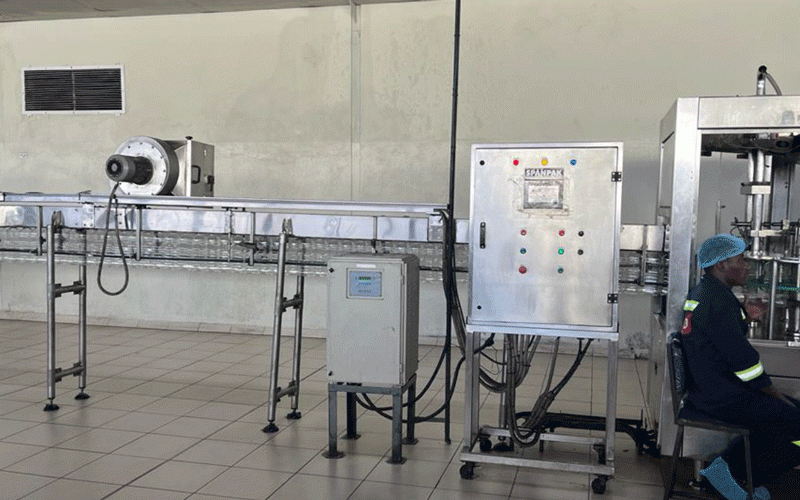
- Continued from last week
Key issues affecting the stability of forex earnings
Commodity price risks
According to the World Bank, global economic growth has slowed sharply in the face of higher interest rates, chronic inflation, and continued fallout from the banking crisis.
The world economy is expected to expand just 2,1% this year after growing 3,1% in 2022.
Advanced economies, including the United States of America (USA) are projected to also cool to a growth rate of just 0,7% this year — a marked drop from the 2,6% rate recorded in 2022 and one of the weakest growth rates in the last five decades.
The implication is that slow growth in developed nations such as China can negatively impact on commodity prices, which in turn hurts countries in Sub-Saharan Africa (including Zimbabwe).
As highlighted in this report, the total value of export receipts is driven largely by minerals and agricultural commodities. An interesting research paper by Csilla Lakatos, Maryla Maliszewska, Israel Osorio-Rhodate and Delfin Go titled China's Slowdown and Rebalancing: Impacts on Sub-Saharan Africa, states that by 2030, an average 1% annual slowdown of China's GDP is expected to result in 1,1% GDP decline in Sub-Saharan Africa and a 0,6% global slowdown relative to past trends.
Overall, Chinese demand is an important part of the equation given that it determines the prices of key commodities such as tobacco, gold and PGMs.
- CCC urged to push for dialogue over reforms
- A peep into Matenganyika’s artistic closets
- The Bioskop Short Film Competition is back
- Mangwe farmers benefit from agric projects
Keep Reading
Import-dependence and productivity downsides
As Mark & Associates, we foresee significant productivity constraints in the broader Zimbabwean economy associated with capital limitations, policy shifts and electricity shortages.
Energy supply constraints continue to cripple productivity and capacity utilisation across Zimbabwean industries.
Limited supply of electricity implies there are technological inefficiencies in the country, and this will have an adverse effect on total output.
Our thesis is supported by the Cobb–Douglas production function, which shows that output in an economy is a function technological progress, capital deepening and labour as illustrated below:
Q (L,K) = A Lβ Kα
Where:
Q is the quantity of products or output
L is the quantity of labour
K is the quantity of capital
Zimbabwe manufacturing activity
Latest data from Zimbabwe National Statistics Agency (Zimstat) shows that the manufacturing sector recorded a contraction in Q1 2023 as measured by the Purchasing Managers Index (PMI), which closed at 36,8 points. This was a decline of two points from 38,8 in Q4 2022 and reflects the decline in economic activity due to power supply problems, cash flow challenges, economic uncertainties, and a general decline in aggregate demand.
Q1 2023 capacity utilisation for the manufacturing sector was 45,6% versus 48,8%, recorded in Q4 2022.
For large manufacturing companies, capacity was at 51,1%, a decline from the fourth quarter value of 56,9%. For small and medium companies in the sector, capacity utilisation for first quarter 2023 was 44,5% from 48,8%, recorded in the fourth quarter.
Factors limiting business expansion includes the high cost of materials for the construction sector and financial problems emanating from the depreciating local currency and the high interest rates in the finance and insurance sector.
Manufacturing sector performance
An analysis of manufacturing sector performance over the years shows that growth has been below the target of 2% per annum.
Gross domestic savings were also below the target of 30% while manufacturing value added generally performed below the target of 16%.
Share of manufactured exports in total merchandise exports rose slightly in 2019 and thereafter continued the declining trend.
Manufacturing sector accounted for 10% of total employment in 2023. In summary, the key constraints affecting the performance of the manufacturing sector from 2019 to date include:
Covid-19 pandemic (2019-2022) — disruptions in production, low global demand, diversification of resources towards fighting the pandemic;
Poor access to funding from multilateral institutions;
Unreliable energy supply from the fourth quarter of 2022 to date;
Macroeconomic instability and inflation in 2023;
Geopolitical tensions — Russia-Ukraine conflict which started in 2022 is affecting global chains development; and
Cheap and substandard imports from our competitors
Below are some of our key recommendations:
Import substitution
The industrial sector, which spans manufacturing, construction, and utilities presents opportunities to spur productivity.
Through increased local manufacturing, companies in Zimbabwe can identify key products the country can produce to meet burgeoning local demand, produce for global markets, and, where needed, reduce dependence on imports.
For example, apparel manufacturing has increased significantly in Ethiopia to address demand in global markets, while Gabon doubled employment in its wood processing industry from 2010 to 2019.
Economic diversification
As highlighted in our analysis, most of Zimbabwe’s exports are extracted commodities. The picture is the same for most African economies such as Ghana, Tanzania, and Zambia.
Extraction also remains the highest-productivity sector on the continent as in the rest of the world. It is not, however, a large employer, and the cyclical and volatile nature of primary commodity prices makes it difficult to base a sustainable economy on this sector alone.
According to a report by Mckinsey & Company, resource wealth across Africa has not always translated into greater human development, due to the complex connections between resource extraction and governance.
Going forward, Africa’s vast resources will need to better support its growth. Zimbabwe can reduce its reliance on traditional extraction by establishing more transparent governance of trade in commodities that are newly in demand such as cobalt and lithium. Zimbabwe can also work to improve the downstream part of the metals value chain, such as smelting and refining, to increase value added.
Automotive companies, battery OEMs, and other downstream players can play enabling roles through strong partnerships with extractive businesses. Investing in automation and digital technologies can also further enhance the sector’s productivity.
Focus on service industries
Traditionally, agriculture and extractive industries has dominated the African economy.
That said, productivity has increased only modestly on average across all sectors of the African economy over the past two decades and is low across the entirety of the African economy relative to peer.
According to McKinsey & Company, the African economy has been undergoing a profound structural shift to services over the past 20 years, as people have left work in the fields to take jobs in trade and other services in cities.
Reflecting that shift, employment in services increased from 30% to 39% over that period.
Services also secured its place as the major driver of the continent’s economic output, contributing 56% in 2019 compared with 50% in 2000 as it captured share from the extractive industries, which were hit by the decelerating commodities cycle over that period.
We opine that a shift to services will be a pathway to increased prosperity by many African countries- (including Zimbabwe).
Like India, such a transition provides a productivity boost since service-sector productivity is higher than that of agriculture. Services also create significant opportunities to boost economic output and job creation.
Leveraging local capital markets
Zimbabwe as a country has witnessed an advancement of local capital markets in the form of trading platforms and new financial products.
However, there is still room for further development. For example, there is need to deepen the capital markets through private sector-led debt instruments that could take the form of commercial paper or bonds.
This ensures that the private sector is crowded-in while the government focuses on national development projects.
Capital market players should develop relevant product offerings and a vibrant bond market that finances manufacturing sector activity.
Increased productivity in trade
Access to the wider African market through the recently inaugurated African Continental Free Trade Area (AfCFTA) is a major boost for economies such as Zimbabwe.
Investing in lower costs of transportation and coordinating tariffs and regulations across the continent are key enablers of productivity in trade.
The African Continental Free Trade Area that came into force in 2019 presents an important opportunity — and could apply insights from established models such as the North American Free Trade Agreement, the European Union, the Association of Southeast Asian Nations, and others.
Similarly, Africa can better leverage its Regional Economic Communities (RECs) to support collaboration across national boundaries that will increase productivity and economic growth through the development of regional and global value chains.
Innovation in production
Innovation is the ability to conceive, develop, deliver, and scale new products, services, processes, and business models for customers.
Successful innovation delivers net new growth that is substantial. Zimbabwe has set up innovation hubs under tertiary institutions that are now contributing to industrial development.
Examples include oxygen production - Verify Engineering, Mapfura processing in Masvingo, Baobab processing, Mauyu processing, ventilators by Harare Institute of Technology, Covid-19 personal protection equipment materials.
There is need to promote research and development (R&D), while fostering collaboration between tertiary institutions and the private sector.
- Mark & Associates (M&A) Consulting Group is a strategic advisory firm focused on critical issues at the centre of economics, business, politics and society. (https://markassociates-portal.web.app). It offers a customised and adapted strategy consulting service, incorporating deep knowledge of both global and local dynamics. Its focus is on helping business and policy leaders make informed decisions based on cutting-edge insights. Founder and CEO of PiggyBankAdvisor Batanai Matsika is a director at M&A.






